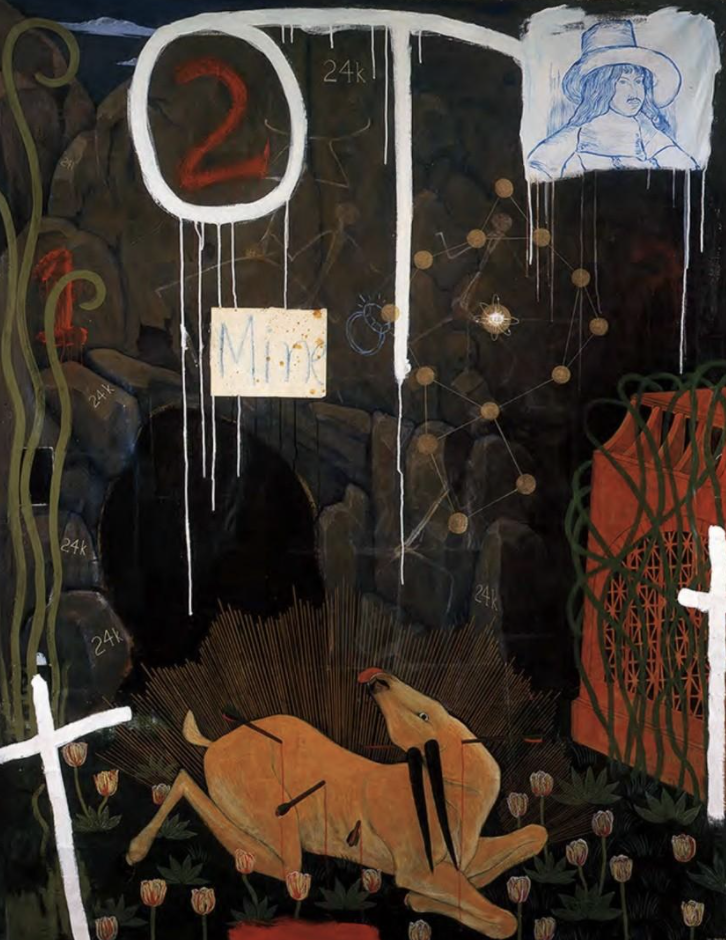Kerry James Marshall, American
Beauty Examined, 1993
In this exceptionally terrifying painting, Kerry James Marshall explores the history of scientific racism, eugenics, and the treatment of the Black body as the “sacrifice zone” that Franz Broswimmer describes in Ecocide. The painting shows a Black woman, with her skin rendered impossibly black in Marshall’s signature style, laying on an examination table—surrounded by the faint ghosts of funerary flowers. Surrounding the woman’s body are the words and diagrams of an anatomy lab: “anatomical axiom,” “SUBJECT/female/blk..age.30,” and a diagram of the human nervous system. With her body laid out like a landscape (further reinforced by the floral imagery and building which also surrounds her), this woman and the harm being done to her illustrates the inextricable ties between the abuse of the land, the abuse of marginalized people, and the abuse of “science” to justify these atrocities. Through this understanding, slavery and scientific racism exist not just as an atrocity on humankind, but an ecological atrocity that continues into the modern day. Label by Maxwell Cloe


